#information technology patents services in california
Explore tagged Tumblr posts
Text
Stay Ahead in Patenting with Immunisip’s Advanced Proofreading and IDS Services in California
In the ever-evolving world of patent filing, ensuring the accuracy and precision of your documents is paramount. Mistakes in patent applications can lead to significant delays, legal complications, and even the loss of valuable intellectual property rights. At Immunisip, we specialize in delivering the highest quality patent services to protect your innovations. Whether you're an independent inventor, a startup, or a large corporation, our comprehensive range of services, including patent proofreading services in california, is designed to meet your needs.
Why Choose Immunisip for Patent Proofreading?
Patent proofreading is a critical step in the patent filing process, and Immunisip provides the best patent proofreading services in california. Our expert team meticulously reviews your patent documents to identify and correct errors that could impact the validity of your patent. With years of experience in the field, our proofreaders are trained to spot even the slightest discrepancies, ensuring that your patent application meets all legal requirements.
We also offer specialized patent proofing service in california tailored to your specific needs. Whether it's a complex utility patent or a design patent, our proofreading process ensures accuracy and compliance with the latest patent office standards. Additionally, we utilize advanced patent proofreading automation services in california to enhance efficiency and accuracy, combining human expertise with cutting-edge technology to deliver flawless results.
IDS and File History Services
Alongside our proofreading services, Immunisip excels in providing ids adult services in california and ids support services in california. The Information Disclosure Statement (IDS) is a crucial part of patent applications, where disclosing relevant prior art is mandatory. Our dedicated team offers the best ids support services in california, ensuring that your application complies with all USPTO requirements.
Understanding the history of a patent application is essential, which is why our file history patent services in california are invaluable. Immunisip’s team is skilled in reviewing and analyzing patent file histories to identify any issues that may affect the outcome of your patent application. Our comprehensive file history services in california provide a detailed examination of prior art, examiner comments, and amendments, giving you a clear view of the patent’s trajectory.
Information Technology Patent Search and Services
In the rapidly advancing field of information technology, staying ahead of the competition requires up-to-date patent research. Immunisip offers specialized information technology patent search in california to help innovators find relevant prior art and assess the patentability of their inventions. Our expert researchers are adept at navigating complex databases and provide precise results to inform your patent strategy.
Moreover, our information technology patents services in california support inventors and companies working on cutting-edge technologies. We provide comprehensive assistance throughout the patent process, from initial searches to filing and post-grant procedures, ensuring your IT patents are robust and defensible.
Conclusion
Navigating the complexities of patent law requires a partner who understands the nuances of the process. Immunisip is proud to offer a suite of services that cater to every aspect of patent filing, including patent proofreading services in California, IDS support services, and information technology patent searches. Our commitment to quality and attention to detail ensures that your intellectual property is in the best hands. Trust Immunisip to safeguard your innovations and provide the expert support you need in California.
Contact us today to learn more about our patent services and how we can help you protect your intellectual property with precision and expertise.
#patent proofreading services in california#patent proofing service in california#best patent proofreading services in california#patent proofreading automation services in california#ids adult services in california#ids support services in california#best ids support services in california#file history patent services in california#comprehensive file history services in california#information technology patent search in california#information technology patents services in california
0 notes
Text
Enhancing IP Strategy with Visual Tools: Flow Charts and Graphs by Immunis IP
Introduction
Flow charts and graphs are indispensable tools for visualizing complex processes, data patterns, and decision-making pathways. When integrated into intellectual property processes, especially those facilitated by Immunis IP, these tools help streamline workflows, enhance clarity, and support strategic planning in patent-related activities. Immunis IP offers a range of specialized services, including patent flow chart services in Canada, which help businesses efficiently navigate the patent process.
Understanding Flow Charts
Flow charts provide a visual representation of a process or workflow, illustrating steps in sequential order through standardized symbols such as rectangles, diamonds, and arrows. In the realm of intellectual property (IP), flow charts are particularly effective in patent drafting, prosecution, and claims analysis. At Immunis IP, flow charts simplify complex patent processes by breaking them down into clear visual steps, allowing stakeholders—including inventors, patent attorneys, and examiners—to track progress and identify bottlenecks easily. This is especially relevant for businesses seeking design patent flow chart services in Canada, where understanding the steps of design patent filing can be crucial.
Benefits of Flow Charts in IP Management
The clarity and simplicity offered by flow charts allow intricate processes to be understood at a glance. This increased transparency can lead to more efficient workflows by highlighting potential bottlenecks and avoiding redundancy. Furthermore, flow charts facilitate better collaboration among team members by providing a common visual language that fosters effective communication between patent attorneys, inventors, and technical experts. The creation of technical flow charts in New York, for instance, helps ensure that complex IP processes are accessible to all stakeholders involved. Additionally, visualizing the process helps identify potential areas for errors, allowing teams to proactively address and correct them.
Understanding Graphs
Graphs are essential tools for illustrating data patterns and trends, making them particularly useful in IP management. They help present quantitative data related to patent filings, litigation success rates, and geographical distributions of intellectual property assets. Immunis IP leverages graphical representation for patents in California to transform complex datasets into easy-to-understand visual formats, supporting data-driven decision-making for clients. For instance, graphs can highlight trends in patent portfolios, showing how certain technologies are evolving and which patents are generating the most value.
Types of Graphs Used by Immunis IP
Immunis IP utilizes various types of graphs to represent different aspects of intellectual property. Intellectual property graphs in California provide valuable insights into regional patent trends, helping businesses make informed decisions. Bar graphs are effective for comparing quantities, such as the number of patent applications filed in specific years or among different technologies. Line graphs illustrate trends over time, providing insights into the growth of patent filings in particular jurisdictions. Pie charts visually represent proportional data, useful for showing the distribution of patents across sectors. Scatter plots can examine relationships between variables, such as the correlation between R&D spending and patent filings.
Importance of Graphs in IP Strategy
Graphs play a crucial role in data visualization, making large datasets more digestible and allowing for quicker comprehension. They aid in strategic decision-making, as companies can identify trends and adjust their filing strategies or focus areas based on visual data insights. Graphical representation for patents in California can assist companies in understanding how their competitors are evolving. Moreover, visual representations of historical trends in IP litigation help organizations mitigate potential risks by enabling timely, informed decisions.
Conclusion
Flow charts and graphs are powerful tools that transform the complexities of intellectual property management into clear, actionable insights. By offering services such as patent flow chart services in Canada and intellectual property graphs in California, Immunis IP empowers businesses and inventors to streamline their processes, enhance collaboration, and make data-driven decisions. Whether simplifying patent workflows or visualizing key trends, Immunis IP’s use of these tools ensures clients can navigate the competitive IP landscape with confidence and efficiency. In a fast-paced, evolving field, these visual aids are crucial in helping businesses stay ahead and protect their innovations.
0 notes
Text
Understanding IT Ethics, Intellectual Property Rights, and Legal Implications for BCA Students
In the rapidly evolving field of Information Technology (IT), it is crucial for BCA students to grasp the ethical, legal, and intellectual property aspects that shape the industry. This understanding not only fosters responsible technology use but also prepares students to navigate complex legal landscapes and make ethical decisions in their future careers.
1. IT Ethics
What is IT Ethics?
IT ethics involves the moral principles and standards that guide behavior in the field of information technology. It addresses issues related to the responsible use of technology, data privacy, and the impact of IT on society.
Key Ethical Issues in IT:
Privacy and Data Protection: Ensuring that personal data is collected, stored, and used responsibly. Adhering to privacy laws like GDPR (General Data Protection Regulation) and CCPA (California Consumer Privacy Act) is essential.
Cybersecurity: Ethical considerations around protecting systems and data from unauthorized access, breaches, and attacks. IT professionals must ensure robust security measures are in place.
Digital Rights: Respecting users' digital rights, including their right to access information and the freedom from digital harassment or discrimination.
Ethical Decision-Making:
Transparency: Being honest about data collection practices and technology use.
Accountability: Taking responsibility for actions and decisions related to IT systems and data handling.
2. Intellectual Property Rights
What are Intellectual Property Rights?
Intellectual Property (IP) rights protect creations of the mind, such as inventions, literary and artistic works, designs, symbols, names, and images used in commerce. For IT professionals, understanding IP rights is crucial for protecting their own work and respecting others’ creations.
Types of Intellectual Property:
Copyright: Protects original works of authorship, such as software code, written content, and multimedia. It grants the author exclusive rights to use, distribute, and modify their work.
Patents: Protects inventions and technological advancements. Obtaining a patent gives the inventor exclusive rights to make, use, and sell the invention for a certain period.
Trademarks: Protects symbols, names, and logos that distinguish goods or services. Trademarks help in branding and ensuring consumers can identify the source of products or services.
Trade Secrets: Protects confidential business information, such as algorithms or proprietary processes, that provides a competitive edge.
Check our other blogs
Preparing for Job Interviews: Essential Tips for BCA Graduates
Respecting IP Rights:
Avoiding Plagiarism: Ensuring that you do not use someone else's work without permission or proper attribution.
Licensing and Fair Use: Understanding and adhering to licensing agreements for software and other IP. Using works under fair use guidelines where applicable.
3. Legal Implications in IT
Legal Frameworks and Compliance:
Data Protection Laws: Adhering to laws that regulate the collection, storage, and use of personal data. For instance, GDPR requires companies to protect the data of EU citizens.
Cybercrime Laws: Understanding laws related to unauthorized access, hacking, and other cybercrimes. Engaging in such activities can lead to severe legal consequences.
Contractual Obligations: Recognizing the legal implications of contracts related to software development, IT services, and employment. This includes understanding terms of service, non-disclosure agreements, and licensing terms.
Legal Responsibilities:
Legal Accountability: Ensuring compliance with all relevant laws and regulations in your professional work. This includes data protection, intellectual property laws, and industry-specific regulations.
Ethical Conduct: Conducting yourself in a manner that aligns with both legal requirements and ethical standards.
Regent Education & Research Foundation (RERF) stands out as the best BCA college in Kolkata, renowned for its commitment to excellence in education. Offering a cutting-edge curriculum and state-of-the-art facilities, RERF provides students with a robust foundation in computer applications.
Conclusion
For BCA students, understanding IT ethics, intellectual property rights, and legal implications is fundamental to becoming responsible and successful IT professionals. This knowledge equips you to navigate the complexities of the IT industry, make informed decisions, and contribute positively to the technological landscape. By upholding ethical standards, respecting intellectual property, and adhering to legal requirements, you can build a career grounded in integrity and professionalism.
1 note
·
View note
Text
Protecting Your Ideas: A Guide to Immunis IP’s Patent Services
Innovation is the cornerstone of progress. Every groundbreaking product or ingenious idea starts with a spark of creativity. But turning that spark into something that can change the world involves more than just inspiration; it requires protection. This is where Immunis IP steps in, offering a range of patent and intellectual property services in USA designed to safeguard your innovations.
Understanding Patents and Intellectual Property
Before diving into what intellectual property services in california offer, it’s important to understand the basics of patents and intellectual property. Patents are legal documents granted by a government that give an inventor exclusive rights to make, use, and sell an invention for a certain number of years. Intellectual property, on the other hand, refers to creations of the mind, such as inventions, literary and artistic works, designs, symbols, names, and images used in commerce by patent registration companies in california and USA
Why Protecting Your IP Matters
Imagine spending years developing a new technology only to see it copied and sold by someone else. Without proper protection, this is a real risk. Patents and other forms of IP protection ensure that inventors and businesses can reap the benefits of their hard work.The ip patent in USA and California provides a competitive edge, helps secure investment, and can be a valuable source of revenue through licensing or sales.
Immunis IP: Your Partner in Innovation
Patent registration in california and USA specializes in providing comprehensive patent and IP services to protect your valuable ideas. Their services are designed to be accessible, efficient, and tailored to the unique needs of each client. Here’s a closer look at what they offer:
1. Patent Drafting and Filing
Drafting a patent is both an art and a science. It requires a deep understanding of the invention, the ability to describe it in precise legal terms, and knowledge of the patent laws in various jurisdictions. patent drafting services in california team of experienced professionals excels at crafting detailed and clear patent applications that stand up to scrutiny. Once the patent is drafted, they handle the filing process, ensuring that all necessary documentation is submitted correctly and on time by patent drafting services and Patent filing services in california
2. Novelty Searches and Prior Art Searches
Before filing a patent, it’s crucial to determine whether your invention is truly unique. novelty/patentability search in california conducts thorough novelty searches to identify any existing patents or publications that might affect the patentability of your invention. They also perform prior art searches, which involve examining previous inventions in the same field to ensure that your idea is original and hasn’t been patented already by prior art searching in california and USA
3. Patent Landscape Analysis
Understanding the broader context of your invention can provide strategic insights. A patent landscape analysis maps out existing patents in a specific area, helping you identify trends, opportunities, and potential competitors. patent landscape analysis in USA and California helps clients make informed decisions about their IP strategy, guiding them on where to focus their efforts and investments.
4. IP Management
Managing a portfolio of patents and other IP assets can be complex and time-consuming. Immunis IP offers comprehensive managed ip services in california and USA to keep track of deadlines, maintain records, and handle renewals. This ensures that your IP rights remain in force and that you don’t miss any critical deadlines that could jeopardize your protections.
5. Illustrations and Design Drawings
A picture is worth a thousand words, especially in patent applications where clear and accurate illustrations can make a significant difference. patent illustration services in california and USA provide high quality illustrations and design drawings that meet the stringent requirements of patent offices around the world. These visuals help to clearly convey the details of your invention, enhancing the clarity and effectiveness of your patent application.
6. Litigation Support
In the event of a dispute over your IP rights, having expert support can be invaluable. product launch services in USA and California offer litigation support services, providing the expertise needed to navigate legal challenges. They assist with everything from preparing documentation to representing clients in legal proceedings, ensuring that your rights are vigorously defended.
Conclusion
Innovation drives progress, and protecting that innovation is crucial. patent search company in USA and California offers a range of services designed to safeguard your inventions and intellectual property, ensuring that you can reap the benefits of your hard work. With their expertise, commitment to confidentiality, and customer focused approach, Immunis IP is the partner you need to navigate the complexities of the IP landscape. Whether you’re a seasoned inventor or just starting out, they provide the support and guidance needed to protect your ideas and enhance your business value.
For more information please contact.www.immunisip.com
#patent drafting services in california#patent illustration services in california#patent drawing experts in california#patent drawing company in california#patent drafting services in USA#patent illustration services in USA#patent drawing experts in USA#patent drawing company in USA
0 notes
Text
State-of-the-Art Patent and Search Services in California and New York
In the dynamic world of intellectual property, the need for state-of-the-art patent and search
services has never been greater. Both California and New York stand at the forefront of this field,
offering cutting-edge solutions to meet the growing demands of innovators and businesses. These
states boast some of the most advanced services, ensuring that clients receive the best possible
support for their patent and search needs.
State-of-the-Art Patent Services in California
California, a global hub for technology and innovation, is home to numerous top-tier patent service
providers. These services encompass everything from initial patentability assessments to the drafting
and filing of patent applications. Leveraging the latest technological advancements, state-of-the-art
patent services in California utilize sophisticated software and tools to conduct thorough prior art
searches, ensuring that inventions are truly novel. Furthermore, these services often include
comprehensive patent analytics, providing clients with valuable insights into market trends and
competitive landscapes.
State-of-the-Art Search Services in California
The demand for precise and efficient search services in California has led to the development of
highly advanced solutions. These services employ the latest in AI and machine learning technologies
to enhance the accuracy and speed of searches. State-of-the-art search in California covers a wide
range of needs, from patent searches to market and competitive intelligence. By integrating
advanced data analytics and machine learning algorithms, these services offer clients detailed and
actionable information, helping them make informed decisions and stay ahead of the competition.
State-of-the-Art Patent Services in New York
New York, a major center for finance and business, also excels in providing state-of-the-art patent
services. The state's service providers are renowned for their expertise in various industries,
including finance, healthcare, and technology. State-of-the-art patent services in New York include
comprehensive prior art searches, patent drafting, and filing, as well as patent portfolio
management. By employing advanced search technologies and experienced professionals, these
services ensure that clients receive thorough and accurate patent protection.
State-of-the-Art Search Services in New York
In New York, the emphasis on innovation and business intelligence has led to the evolution of state
of-the-art search services. These services utilize cutting-edge technologies such as natural language
processing and big data analytics to perform in-depth searches across multiple databases. Whether
it's for intellectual property, market research, or competitive analysis, state-of-the-art search in New
York provides clients with detailed and precise information. This enables businesses to identify
opportunities, mitigate risks, and make strategic decisions with confidence.Conclusion
Both California and New York are leaders in providing state-of-the-art patent services in new york. By
leveraging the latest technologies and employing skilled professionals, service providers in these
states ensure that clients receive the highest level of support. Whether you are an innovator looking
to protect your invention or a business seeking detailed market insights, the state-of-the-art search
and patent services in California and New York are equipped to meet your needs, driving innovation
and business success.
0 notes
Text
Connected Retail Market: Global Industry Analysis and Forecast 2023 – 2030

The Global Connected Retail Market size is expected to grow from USD 32.96 billion in 2022 to USD 137.07 billion by 2030, at a CAGR of 19.05% during the forecast period (2023-2030).
Connected retail is a place that is integrated and digitally evaluated with accumulated experiences that Connected retail and influence customers at the bridge between the primary and physical worlds. It's a retailer that connects with customers through technology, but it's a great experience.
In the digital world of connected retail, retail brands exist to enhance their understanding of their customers. Now, customers have an unlimited choice of options to find and purchase products and services, both online and offline. With accelerating technology growth, businesses must take new strategies to elevate their Connected retail marketing approaches and manage customer demand.
Get Full PDF Sample Copy of Report: (Including Full TOC, List of Tables & Figures, Chart) @
https://introspectivemarketresearch.com/request/15764
The latest research on the Connected Retail market provides a comprehensive overview of the market for the years 2023 to 2030. It gives a comprehensive picture of the global Connected Retail industry, considering all significant industry trends, market dynamics, competitive landscape, and market analysis tools such as Porter's five forces analysis, Industry Value chain analysis, and PESTEL analysis of the Connected Retail market. Moreover, the report includes significant chapters such as Patent Analysis, Regulatory Framework, Technology Roadmap, BCG Matrix, Heat Map Analysis, Price Trend Analysis, and Investment Analysis which help to understand the market direction and movement in the current and upcoming years. The report is designed to help readers find information and make decisions that will help them grow their businesses. The study is written with a specific goal in mind: to give business insights and consultancy to help customers make smart business decisions and achieve long-term success in their particular market areas.
Leading players involved in the Connected Retail Market include:
Cisco Systems (San Jose California), Verizon (New York, United States), International Business Machines Corporation (IBM) (U.S.), Amazon Web Services Inc. (Seattle, U.S.), Microsoft Corporation (Washington, U.S.), Google Inc. (U.S.), Microsoft Corporation (U.S.), Intel Corporation (Santa Clara, U.S), Fujitsu Limited (Tokyo, Japan), PTC Inc. (Massachusetts, U.S) other Major Players.
If You Have Any Query Connected Retail Market Report, Visit:
https://introspectivemarketresearch.com/inquiry/15764
Segmentation of Connected Retail Market:
By Type
Hardware
Software
Services
By Application
ZigBee
NFC
Bluetooth Low Energy
Wi-Fi
Other Technologies
By Regions: -
North America (US, Canada, Mexico)
Eastern Europe (Bulgaria, The Czech Republic, Hungary, Poland, Romania, Rest of Eastern Europe)
Western Europe (Germany, UK, France, Netherlands, Italy, Russia, Spain, Rest of Western Europe)
Asia Pacific (China, India, Japan, South Korea, Malaysia, Thailand, Vietnam, The Philippines, Australia, New Zealand, Rest of APAC)
Middle East & Africa (Turkey, Bahrain, Kuwait, Saudi Arabia, Qatar, UAE, Israel, South Africa)
South America (Brazil, Argentina, Rest of SA)
What to Expect in Our Report?
(1) A complete section of the Connected Retail market report is dedicated for market dynamics, which include influence factors, market drivers, challenges, opportunities, and trends.
(2) Another broad section of the research study is reserved for regional analysis of the Connected Retail market where important regions and countries are assessed for their growth potential, consumption, market share, and other vital factors indicating their market growth.
(3) Players can use the competitive analysis provided in the report to build new strategies or fine-tune their existing ones to rise above market challenges and increase their share of the Connected Retail market.
(4) The report also discusses competitive situation and trends and sheds light on company expansions and merger and acquisition taking place in the Connected Retail market. Moreover, it brings to light the market concentration rate and market shares of top three and five players.
(5) Readers are provided with findings and conclusion of the research study provided in the Connected Retail Market report.
Our study encompasses major growth determinants and drivers, along with extensive segmentation areas. Through in-depth analysis of supply and sales channels, including upstream and downstream fundamentals, we present a complete market ecosystem.
If you require any specific information that is not covered currently within the scope of the report, we will provide the same as a part of the customization.
Acquire This Reports: -
https://introspectivemarketresearch.com/checkout/?user=1&_sid=15764
About us:
Introspective Market Research (introspectivemarketresearch.com) is a visionary research consulting firm dedicated to assisting our clients to grow and have a successful impact on the market. Our team at IMR is ready to assist our clients to flourish their business by offering strategies to gain success and monopoly in their respective fields. We are a global market research company, that specializes in using big data and advanced analytics to show the bigger picture of the market trends. We help our clients to think differently and build better tomorrow for all of us. We are a technology-driven research company, we analyse extremely large sets of data to discover deeper insights and provide conclusive consulting. We not only provide intelligence solutions, but we help our clients in how they can achieve their goals.
Contact us:
Introspective Market Research
3001 S King Drive,
Chicago, Illinois
60616 USA
Ph no: +1-773-382-1047
Email: [email protected]
#Connected Retail#Connected Retail Market#Connected Retail Market Size#Connected Retail Market Share#Connected Retail Market Growth#Connected Retail Market Trend#Connected Retail Market segment#Connected Retail Market Opportunity#Connected Retail Market Analysis 2024
0 notes
Text
Future-Proof Your Inventions: Patent Drafting Services from Immunisip
In the dynamic landscape of innovation, securing your intellectual property is paramount. At Immunisip, we understand that your ideas are the lifeblood of progress, and protecting them requires a meticulous approach. Introducing our specialized Patent Drafting Services designed to future-proof your inventions and safeguard your journey into the realms of creativity.
Why Choose Immunisip's Patent Drafting Services?
1. Unparalleled Expertise:
Our team comprises seasoned patent drafters with a wealth of experience across diverse industries. We bring a deep understanding of the intricacies of patent law, ensuring that your inventions are articulated with precision and expertise.
2. Tailored Solutions:
Recognizing that each invention is unique, our approach is never one-size-fits-all. We collaborate closely with inventors to comprehend the nuances of their creations, customizing our patent drafting services in California, patent drawing services in North Carolina, and patent drafting in New York to meet specific requirements and objectives.
3. Strategic Thinking:
Patent drafting is not merely a procedural step; it's a strategic process. Immunisip goes beyond the basics, strategically positioning your inventions within the patent landscape to maximize protection and future market potential.
4. Comprehensive Research:
Our patent drafting services are backed by exhaustive research. We conduct thorough patent search and drafting in the USA, ensuring that your invention stands out as novel and inventive, meeting the stringent criteria set by patent offices.
It will also provide servies like Patent Filing,PCT Filing,National Phase Filing,Office Action,Concept/Ideation Stage,Novelty/Patentability Search and etc…
5. Legal Rigor:
Immunisip is committed to upholding the highest legal standards in patent drafting. Our team ensures that every document adheres to the relevant patent laws and regulations, minimizing the risk of challenges and maximizing the likelihood of successful patent grants.
The Immunisip Advantage:
1. Innovation Protection:
Our patent drafting services are geared towards not only securing your inventions but also fortifying them against future technological shifts and market changes. We envision the future to ensure your patents remain relevant and valuable.
2. Collaboration for Success:
Immunisip believes in collaborative success. We work closely with inventors, legal teams, and stakeholders to capture the essence of your invention and translate it into a robust patent application.
3. Timely and Efficient:
Time is of the essence in the competitive world of innovation. Immunisip is dedicated to delivering timely and efficient patent drafting services, ensuring that your intellectual property is protected without unnecessary delays.
4. Global Reach:
In a world interconnected by innovation, we recognize the importance of global protection. Our patent drafting services extend across borders, offering patent drafting services in Canada and patent drawing services in India, helping you secure your inventions on an international scale.
Secure Your Future with Immunisip
Immunisip is not just a service; it's a commitment to the future of innovation. With our Patent Drafting Services, you can confidently navigate the complex landscape of intellectual property, knowing that your inventions are in the hands of experts dedicated to securing and future-proofing your ideas.
Contact Immunisip today and embark on a journey to safeguard your innovations for the challenges and opportunities that lie ahead.For more information please visit www.Immunisip.com
0 notes
Text
Michigan becoming a hub for artificial intelligence inventions
Michigan has the largest number of artificial intelligence and machine learning patents issued in the Midwest since 2010 with the Detroit area ranking among the top nine regions for innovation across the country, according to a new report. The Detroit-Warren-Dearborn metropolitan area had 896 AI patents issued, making it the ninth-most innovative U.S. metro, according to CommercialCafe, a commercial real estate Internet listing service. While Silicon Valley in California far surpasses any other metro area for AI patents, metro Detroit held its own on the list largely because of the presence of the automotive industry and related suppliers, in addition to the growing startup network in Detroit, the report said. "Because the U.S. is home to several global leaders in both automotive and key automation technologies, markets like the Detroit metro area are intriguing to both investors and innovators worldwide," the October report said. "With nearly 900 AI and ML patents at the close of 2022, the Detroit MSA ranked as the ninth-most innovative metro in the U.S. — and continues to show that the Motor City inventive spirit remains strong." The companies topping the list of AI/ML patents were Ford Global Technologies with 321 patents, GM Global Technology Operations with 296 and Magna Electronics with 53 patents issued. Specifically, CommercialCafe cited the partnership between Google and Ford Motor Co. to convert the 105-year-old Michigan Central train station and surrounding neighborhood into the Michigan Central Innovation District as a hub for mobility and entrepreneurship. As part of the mobility-focused, smart city project, Google agreed to provide cloud technology, as well as work force development training to high school students and job seekers in the Detroit area, the report said. In addition to Ford, General Motors and Stellantis have established mobility and software engineering projects in Michigan in recent years, bringing Silicon Valley closer to home, it said. Ford could not be reached for comment. A GM spokesperson said the company was unable to comment on patent filings or their intended use "due to the competitive nature of the space." A growing startup center Alan Taub, director of the University of Michigan's Michigan Materials Research Institute, said an increased interest in startups is also leading to a more competitive mobility market, which is why Michigan is seeing more AI patents. "The technology revolutions of connected vehicles, self-driving vehicles and electric vehicles are moving at an unprecedented rate for the industry," Taub said. "And with the introduction of new startups, all of a sudden intellectual property moved from sort of the bare minimum to a major part of the strategy of companies. … I think if you just do a historical look at the number of patents around mobility, it has skyrocketed, because they're much more valuable, and it's a much more hyper-competitive space." HostingAdvice.com, a web-hosting information site, recently ranked Detroit as one of the top 13 cities drawing startups away from Silicon Valley. Detroit ranked No. 6 on the list, citing the city's economic resiliency after the 2008 financial crisis and the city's business-friendly tax environment. In the 2022 Global Startup Ecosystem Report by Startup Genome, an innovation policy advisory and research firm based in San Francisco, Detroit was ranked the No. 1 city in the U.S. for emerging startup ecosystems. Henry Liu, an engineering professor and director of Mcity, UM's mobility testing facility, said AI is becoming an essential part of autonomous vehicles. "AI is going to transform every aspect of mobility, not only just the vehicle, but the infrastructure, the manufacturing of the vehicles, and in service to people," Liu said. A typical use of AI in mobility is in self-driving vehicles. Liu used the example of a Tesla, which has eight cameras and 12 sensors that feed information about the traffic, pedestrians and other vehicles to the control system. In the past, the development of…
0 notes
Text
Google 25th Birthday Special :- 11 Amazing Google Search Tricks and Facts

Hello, all as you know today is Google's 21st Birthday so try these Amazing Google Search Tricks on Google all search tricks are amazing and I bet you have seen this before on Google. As you know Google is big giant search engine. We get most of the questions answered in just one click. So today we searched some interesting search results in Google for fun. Let's start. Also read:- - Share Mobile screen to another mobile - Use your mobile as a CCTV camera - How to see old facebook status video and photos - Recover lost deleted data
11 Amazing Google Search Tricks
1. Want your search result Let's an italic way or Tilt search "ASKEW"

2. Now want to see Some "O" eating your search result Search "ZERG RUSH" and open the first result.

3. Now play the game in the Google Images window go to Google and Search "ATARI BREAKOUT" and open the first result
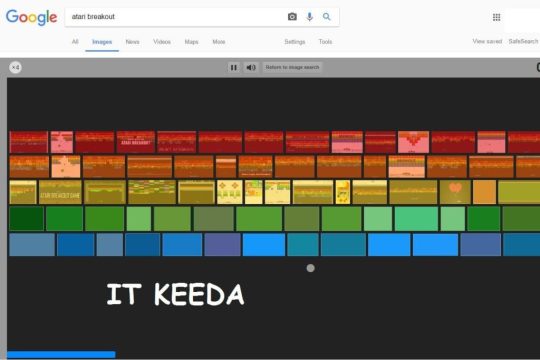
4. Want to set a timer in Google search "FOUR MINUTE TIMER" write any number you want in place of FOUR

5. Did you know what Google window looked like in 1998 ?? Search "GOOGLE IN 1998" and open the first result you will see Google's old page
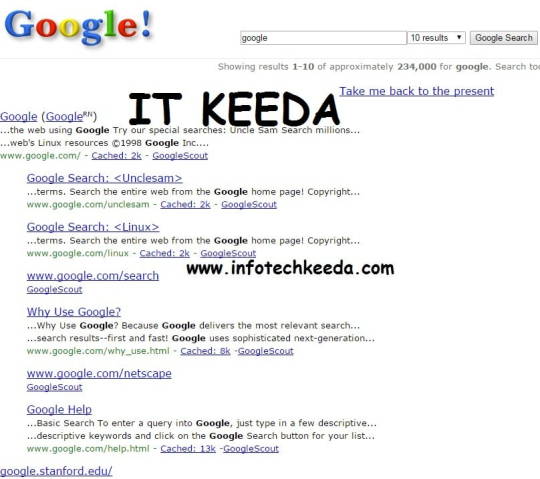
6. Play one of the famous in Google search "PACMAN" and play

7. Going to play a cricket match with a no coin in a pocket for a toss just open Google and Search "FLIP A COIN" for a toss.

8. Search "ROLL A DICE"

9. Google also tells animal voices just search "WHAT DOES THE SAY"

10. One of my favorite searches is if Gmail is blocked in your office but you want to know recent mail you just sign in to Google and search "MY RECENT MAIL" and it shows recently received mail

11. Last but not least, it is very helpful for Writing numbers in words just search "ANY NUMBER =ENGLISH" in place of any number type number you want in words like "9999 =ENGLISH" and it shows the word result of that number

Here are 50 interesting facts about Google
Google was founded in 1998 by Larry Page and Sergey Brin, two PhD students at Stanford University. The name "Google" is a play on the word "googol," which is the mathematical term for the number 1 followed by 100 zeros. Google's first office was a rented garage in Menlo Park, California. Google's first doodle was a Burning Man stick figure. It was created in 1998 to let users know that the founders were out of the office attending the Burning Man festival. Google's mission statement is "to organize the world's information and make it universally accessible and useful." Google's motto is "Don't be evil." Google's search engine processes over 8.5 billion searches per day. Google's data centers use more electricity than the entire city of San Francisco. Google owns over 2,000 patents, including patents for self-driving cars, artificial intelligence, and virtual reality. Google's employees are known as "Googlers." Google's corporate culture is known for being innovative and creative. Employees are encouraged to take risks and come up with new ideas. Google's stock is traded on the Nasdaq stock exchange under the symbol GOOGL. Google's market capitalization is over $1 trillion. Google is one of the most valuable companies in the world. Google is a member of the "Big Five" technology companies, along with Amazon, Apple, Facebook, and Microsoft. Google has offices in over 60 countries around the world. Google's products and services are used by billions of people around the world. Google's search engine is the most popular search engine in the world. Google's Android mobile operating system is the most popular mobile operating system in the world. Google's Chrome web browser is the most popular web browser in the world. Google's Gmail email service is one of the most popular email services in the world. Google's YouTube video-sharing platform is one of the most popular video-sharing platforms in the world. Google's Google Maps service is one of the most popular mapping services in the world. Google's Google Drive cloud storage service is one of the most popular cloud storage services in the world. Google's Google Docs word processing software is one of the most popular word processing software applications in the world. Google's Google Sheets spreadsheet software is one of the most popular spreadsheet software applications in the world. Google's Google Slides presentation software is one of the most popular presentation software applications in the world. Google's Google Keep note-taking app is one of the most popular note-taking apps in the world. Google's Google Translate translation service is one of the most popular translation services in the world. Google's Google Scholar academic search engine is one of the most popular academic search engines in the world. Google's Google Books book search engine is one of the most popular book search engines in the world. Google's Google Finance financial information service is one of the most popular financial information services in the world. Google's Google News news aggregator is one of the most popular news aggregators in the world. Google's Google Play Store app store is one of the most popular app stores in the world. Google's Google Cloud Platform cloud computing platform is one of the most popular cloud computing platforms in the world. Google's Google AI artificial intelligence division is one of the leading artificial intelligence research and development teams in the world. Google's Google X research and development lab is one of the most innovative research and development labs in the world. Google has made significant investments in self-driving cars, artificial intelligence, and virtual reality. Google is one of the most powerful companies in the world. Google has a significant impact on the global economy and society. Google has been praised for its innovation and its commitment to making the world a better place. Google has also been criticized for its dominance of the search engine market and its collection of personal data. Google is a complex and controversial company, but there is no doubt that it is one of the most important companies in the world today. Google is that it is a company that is committed to diversity and inclusion. Google's workforce is one of the most diverse in the world, and the company is constantly working to create a more inclusive workplace for all employees Google has a number of fun and quirky features, such as the ability to play Pac-Man in the search results. Google also has a number of serious features, such as the ability to translate languages, read books, and even write code. Google is constantly innovating and adding new features to its products and services. Google is a major player in the technology industry and has a significant impact on the way we live and work. Google is a global company with offices in over 60 countries around the world. Google is a major employer and provides jobs to millions of people around the world. I hope you like these search tricks, Share with your friends and comment, and visit IT KEEDA Read the full article
#google#googlehiddentricks#googlesearch#googlesearchsettings#googlesearchtips#googlesearchtipsandtricks#googlesearchtrick#googlesearchtrick2014#googlesearchtricks#googlesearchtricksyoumustknow#googlesecrettricks#googlesecrets#googletipsandtricks#googletipsandtrickstutorial#googletricks#howtousegooglesearch#tipsandtricksforgooglesearch#topgoogletricks#tricks
0 notes
Text
Broadcom forced Samsung to sign an unequal long-term contract and was fined 19.1 billion won by South Korea

【Lansheng Technology News】Recently, Broadcom, an internationally renowned semiconductor company, has been severely sanctioned by the Korean Fair Trade Commission for its abuse of its market dominance, with a fine of up to 19.1 billion Korean won, approximately RMB 104 million. The story behind this punishment reveals unfair business practices in market competition and also triggers profound thinking about market norms and supervision.
South Korea's FTC pointed out in its official statement that Broadcom used a series of unfair means, including suspending order approval, cutting off supply, and technical support, to force Samsung to sign a long-term procurement contract in 2020. According to this contract, Broadcom requires Samsung to purchase smartphone parts worth a total of US$760 million per year from 2021 to 2023. If the purchase amount is lower than this standard, Samsung will also need to pay the difference.
South Korea's FTC believes that Broadcom has forced Samsung to choose other lower-priced suppliers in this way, so Samsung can only succumb to Broadcom's requirements to ensure that the production of Galaxy S20 smartphones is not interrupted. However, this also means that Samsung spent at least $160 million more in purchasing components, which is undoubtedly a huge expense for a company.
This case is similar to the case where Qualcomm was slapped with the highest fine in history. At that time, Qualcomm was corrected by the Korean Fair Trade Commission and should be prohibited from forcibly tying the supply of computer chips to patent contracts. Therefore, it imposed a fine of 1.03 trillion won (approximately RMB 5.6 billion). ), the largest fine in history.
According to public information, Broadcom is a world-leading semiconductor and infrastructure software company headquartered in California, USA. Broadcom mainly supplies core components for smartphones, tablets and PCs, including radio frequency front-ends, Wi-Fi and satellite navigation systems.
This punishment triggered widespread discussions in the industry about the abuse of market dominance and antitrust regulations. As a giant in the semiconductor industry, Broadcom has a strong market position and influence, but this market power should not be used to harm other competitors, nor should consumers bear unnecessary costs.
Lansheng Technology Limited, which is a spot stock distributor of many well-known brands, we have price advantage of the first-hand spot channel, and have technical supports.
Our main brands: STMicroelectronics, Toshiba, Microchip, Vishay, Marvell, ON Semiconductor, AOS, DIODES, Murata, Samsung, Hyundai/Hynix, Xilinx, Micron, Infinone, Texas Instruments, ADI, Maxim Integrated, NXP, etc
To learn more about our products, services, and capabilities, please visit our website at http://www.lanshengic.com
0 notes
Text
Injectable Cytotoxic Drugs Market 2023-2030
The "Injectable Cytotoxic Drugs Market 2023” Forecast to 2030 research provides accurate economic, global, and country-level predictions and analyses. It provides a comprehensive perspective of the competitive market as well as an in-depth supply chain analysis to assist businesses in identifying major changes in industry practices. The Injectable Cytotoxic Drugs Market report also examines the current state of the industry, as well as predicted future growth, technological advancements, investment prospects, market economics, and financial data.
Factors affecting the growth of Injectable Cytotoxic Drugs Market (2023-2030):
Cytotoxic drugs are one of the vital drug classes used to treat prevalent diseases such as oncology disorders. These drugs are known for their cellular degeneration property that help to eradicate cancerous cells. Cytotoxic injectable medicines are prescribed as the first line of treatment for various types of cancer. The majority of the injectable cytotoxic drugs that are off-patent are available as generics in the global market. Cytotoxic drugs, also known as chemotherapy, are identified for their severe side effects such as bone marrow depression, follicle toxicity, and anemia
The Report Lists the Key Players in the Injectable Cytotoxic Drugs Market:
Johnson and Johnson Services Inc., (U.S)
Sanofi (France)
Eli Lilly and Company (U.S)
Bristol-Myers Squibb Company (New York, U.S)
F. Hoffmann-La Roche Ltd. (Basel, Switzerland)
Novartis AG (Basel, Switzerland)
Pfizer, Inc (New York, U.S)
Merck & Co. Inc (New Jersey, U.S)
Amgen (California, U.S.)
Injectable Cytotoxic Drugs Market Competitive Analysis:
The Injectable Cytotoxic Drugs Market report examines competitive scenario by analyzing key players in the market. The company profiling of leading market players is included this report with Porter's five forces analysis and Value Chain analysis. Further, the strategies exercised by the companies for expansion of business through mergers, acquisitions, and other business development measures are discussed in the report. The financial parameters which are assessed include the sales, profits and the overall revenue generated by the key players of Market.
Report includes Competitor's Landscape:
Major trends and growth projections by region and country
Key winning strategies followed by the competitors
Who are the key competitors in this industry?
What shall be the potential of this industry over the forecast tenure?
What are the factors propelling the demand?
Research Methodology:
We follow a robust research methodology that involves data triangulation based on top-down, and bottom-up approaches, and validation of the estimated market numbers through primary research. The information used to estimate the Injectable Cytotoxic Drugs Market size and forecast for various segments at the global, regional, and country levels is derived from the most credible published sources and through interviews with the right stakeholders. The Growth rate or CAGR exhibited by a market for a certain forecast period is calculated on the basis of various factors and their level of impact on the market.
Regional Insights:
The market area, which is further segmented into sub-regions and nations/regions, is covered in the Injectable Cytotoxic Drugs Market research. This chapter of the research includes details on profit prospects in addition to market share data for each region and subregion.
North America (United States, Canada, and Mexico)
Europe (UK, Germany, France, Russia, and Italy)
Asia-Pacific (China, Korea, Japan, India, and Southeast Asia)
South America (Brazil, Colombia, Argentina, etc.)
The Middle East and Africa (Saudi Arabia, UAE, Nigeria, Egypt, and South Africa)
Key Points from TOC:
Introduction
Research Scope
Injectable Cytotoxic Drugs Market Share
Research Methodology
Definitions and Assumptions
Executive Summary
Market Dynamics
Injectable Cytotoxic Drugs Market Drivers 2030
Market Restraints
Injectable Cytotoxic Drugs Market Opportunities
Key Insights
Global Statistics — Key Countries
New Product Launches
Pipeline Analysis
Regulatory Scenario 2023 — Key Countries
Recent Industry Developments — Partnerships, Mergers & Acquisitions
Global Analysis, Insights and Forecast
Key Findings/ Summary
Market Analysis — By Product Type
Market Analysis — By Distribution Channel
Market Analysis — By Countries/Sub-regions
Competitive Analysis
Key Industry Developments
Global Market Share Analysis 2030
Competition Dashboard
Comparative Analysis — Major Players
Company Profiles
Overview
Products & Services
SWOT Analysis
Recent developments in 2023
Major Investments
Regional Market Size and Demand 2030
Strategic Recommendations
TOC Continued……..
0 notes
Text
How do lawyers navigate the intersection of law and technology advancements?
Lawyers navigate the intersection of law and technology advancements by adapting their legal practices to address emerging legal issues related to technology Criminal Attorney Los Angeles. The rapid pace of technological advancements presents new challenges and opportunities for legal professionals, requiring them to stay informed about technological developments and understand their legal implications Leah Legal Criminal Defense. Here are some ways lawyers navigate the intersection of law and technology:
Specialization in Technology Law: Some lawyers choose to specialize in technology law, which focuses on legal issues related to intellectual property, data privacy, cybersecurity, digital rights, e-commerce, and other technology-related matters. Specialization allows lawyers to develop expertise in these complex and evolving areas.
Continuing Legal Education: Lawyers engage in continuing legal education (CLE) programs to stay up-to-date with developments in technology law. CLE courses often cover topics such as artificial intelligence, blockchain, data protection regulations, and other technology-related legal issues.
Monitoring Legal Developments: Lawyers actively monitor legal developments, including court decisions, legislative changes, and regulatory updates related to technology. This helps them understand how the law is evolving in response to technological advancements.
Collaboration with Tech Experts: Lawyers often collaborate with technology experts, such as computer scientists, engineers, and cybersecurity professionals, to understand the technical aspects of their cases and effectively represent their clients.
Drafting Technology Contracts: Lawyers draft and review technology contracts, including software licenses, service agreements, and data processing agreements, to ensure that they address the unique legal considerations related to technology transactions.
Intellectual Property Protection: Lawyers assist clients in protecting their intellectual property rights, including patents, trademarks, copyrights, and trade secrets, in the context of technological innovations Los Angeles Criminal Defense Lawyer.
Privacy and Data Protection: Lawyers advise businesses on compliance with data protection and privacy laws, such as the General Data Protection Regulation (GDPR) and the California Consumer Privacy Act (CCPA), to safeguard personal information and prevent data breaches.
Cybersecurity and Incident Response: Lawyers help clients develop cybersecurity policies, respond to data breaches, and navigate the legal aspects of cybersecurity incidents, including regulatory reporting and customer notifications.
Regulatory Compliance: Lawyers guide businesses on complying with industry-specific regulations, such as those governing financial technology (fintech), health information technology (healthtech), and autonomous vehicles.
Technology Disputes and Litigation: Lawyers handle disputes and litigation arising from technology-related issues, including patent infringement, software disputes, domain name disputes, and e-commerce disputes.
Policy Advocacy: Lawyers may engage in policy advocacy to shape technology-related legislation and regulations, representing the interests of their clients and industry stakeholders.
Ethical Considerations: Lawyers must consider ethical implications when using technology in their legal practices, such as protecting client confidentiality in electronic communications and ensuring the proper use of technology tools.
Navigating the intersection of law and technology requires a proactive and adaptable approach. Lawyers must continuously develop their skills and knowledge to effectively address the legal challenges and opportunities presented by technological advancements in our ever-evolving digital world.
1 note
·
View note
Text
Competitive Landscape Patent in North Carolina, USA | IP Search
Decoding Competitive Intelligence: A Strategic Imperative for Business Success
Introduction
In the fast-paced and ever-evolving landscape of business, staying ahead of the competition is not just a goal but a constant necessity. To navigate the complexities of the market and make informed decisions, businesses turn to Competitive Intelligence (CI), a strategic discipline that involves the collection, analysis, and interpretation of information about competitors, customers, and the broader business environment.
Understanding Competitive Intelligence:
At its core, Competitive Intelligence is about gaining insights into the strengths and weaknesses of competitors, market trends, and emerging opportunities. It's a systematic process that transforms raw data into actionable knowledge, providing organizations with a holistic view of the competitive landscape. The goal is not just to keep up with the competition but to outmaneuver them strategically.
Key Components of Competitive Intelligence:
Competitor Analysis:
CI begins with a thorough examination of competitors. This includes assessing their market share, product offerings, pricing strategies, and positioning. A specific focus on the competitive landscape of patents in New York, India, and California adds depth to the analysis, providing valuable insights into technological advancements and innovations.
Market Trends and Opportunities:
CI involves monitoring and analyzing market trends, customer preferences, and industry developments. This information helps businesses anticipate shifts in the market, identify emerging opportunities, and align their strategies accordingly. A comprehensive approach to competitive landscape patent in Canada, USA, and North Carolina ensures a nuanced understanding of regional market dynamics.
Customer Insights:
Understanding the needs and preferences of customers is crucial for sustained success. CI gathers customer feedback, analyzes purchasing behavior, and identifies pain points, enabling businesses to tailor their products or services to meet customer expectations more effectively.
Technological Advancements:
In today's tech-driven world, staying abreast of technological developments is imperative. CI keeps organizations informed about innovations and advancements in their industry, allowing them to adopt new technologies strategically or develop competitive landscape solutions.
The Digital Age and Competitive Intelligence:
competitive landscape services in Canada, Advancements in technology have significantly impacted the field of Competitive Intelligence. Big data analytics, artificial intelligence, and machine learning play pivotal roles in processing vast amounts of information quickly and accurately. Automation not only expedites data analysis but also enhances the depth and precision of insights gathered
Ethical Considerations in Competitive Intelligence:
While the pursuit of competitive advantage is paramount, ethical considerations are equally crucial in CI. Engaging in unethical practices, such as corporate espionage or obtaining confidential information through illicit means, can have severe legal consequences. Ethical CI practices involve gathering information through legal and transparent channels, respecting intellectual property rights, and maintaining a commitment to integrity.
Conclusion:
In conclusion, Competitive Intelligence is a strategic imperative for businesses seeking sustainable success in today's competitive landscape. By harnessing the power of information, organizations can make informed decisions, identify opportunities, and proactively respond to challenges. In an era where knowledge is key, competitive landscape services in India. Embracing Competitive Intelligence is not just a strategic choice but a fundamental commitment to staying ahead in the ever-changing world of business. As businesses navigate the complexities of the market, Competitive Intelligence emerges as a guiding light, helping them chart a course towards long-term success, especially when considering the competitive landscape of patents and services across diverse regions such as New York, India, California, Canada, the USA, and North Carolina.
0 notes
Text
Tech trustbusting's moment has arrived
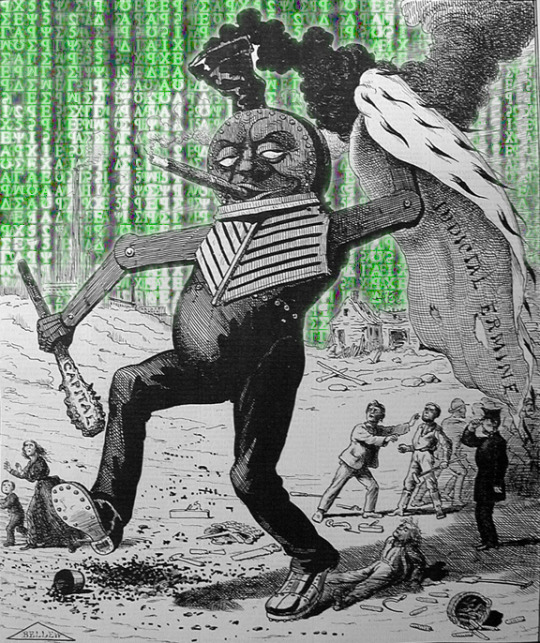
When it's railroading time, you get railroads.
When the railroads turn into the personal satrapies of rail-barons, you get trustbusters.
A couple decades ago, it was online service time. We had the users, the telcoms systems, the computers, the modems, so we got platforms.
We had that, but we lacked something important: effective antimonopoly enforcement. Lax merger laws allowed companies with access to capital markets to buy out or neutralize all their competitors, so we got monopolies.
Right on schedule, we're getting digital trustbusters.
Now, some people aren't technically sophisticated, but they do understand a lot about competition law. That's how you get meat-and-taters antitrust proposals like Amy Klobuchar's CALERA, which address the structural problems with antitrust law.
https://pluralistic.net/2021/02/06/calera/#fuck-bork
Klobuchar's bill is hugely important. The reason we have monopolies is that we stopped enforcing anti-monopoly law 40 years ago. Monopoly isn't a tech problem, it's everywhere from sneakers to glass bottles to pro wrestling to candy to aerospace.
https://www.openmarketsinstitute.org/learn/monopoly-by-the-numbers
Klobuchar's CALERA doesn't just seek to apply antitrust law to tech – it also explicitly restores the pre-Reagan basis for fighting monopolies: we fight monopolies because they concentrate power and corrupt our politics. All monopolies are guilty unless proven otherwise.
But though industries all attained their monopolies through similar tactics – predatory acquisitions and mergers, vertical integration – they also each have their own technical characteristics that must inform our demonopolization tactics.
Take emergency care: monopolists love ERs because we don't choose which ER to use, nor when. You can't shop for an ER from the back of an ambulance. You don't know going in whether you're going to spend $1m or $1k. And you'll buy whatever services the ER tells you to buy.
Or power-grids: demand for electricity is both inelastic (you need power when you need power) and price-insensitive, and that inelasticity increases with demand: that is, when it's freezing or boiling out, everyone wants electricity.
Tech, of course, has its own technical characteristics. Chief among these is its flexibility. At a deep, theoretical level our digital tools and networks are capable of interoperating with one another in ways that no physical technologies can match.
Think of the Australian rail-system. In the mid-19th century, would-be rail-barons laid differing gauges in hopes of conquering the nation's logistics and transport. For 150+ years, engineers have tried to solve the "multi-gauge muddle" by designing multi-system railcars.
Hundreds of designs for cars that retract and extrude different wheelbases have been tried, and none ever caught on. Instead, Australia is tearing up and re-laying thousands of kilometers' worth of track. With physical tech, "compatibility" often means starting from scratch.
Not so with digital tech. If you are an OS company whose rival has locked up all office docs in a proprietary format, you don't have to convince all its customers to abandon their documents and start over. You just make a compatible program:
https://www.eff.org/deeplinks/2019/06/adversarial-interoperability-reviving-elegant-weapon-more-civilized-age-slay
With digital and physical tech, network effects drive high switching costs, but when it comes to digital, network effects are a double-edged sword.
With interoperability, a walled garden can easily become a feed-lot, where customers for a new service are neatly arrayed for competitors to come and harvest.
https://www.eff.org/deeplinks/2021/01/twitter-and-interoperability-some-thoughts-peanut-gallery
Good tech policy emphasizes interoperability when it comes to demonopolizing the digital world. Long before the US ACCESS Act and the EU Digital Markets Act, Mike Masnick published his seminal "Protocols, Not Platforms" paper.
https://www.eff.org/deeplinks/2021/01/twitter-and-interoperability-some-thoughts-peanut-gallery
And Daphne Keller's work on "Magic APIs" presaged the ACCESS Act's idea of forcing tech companies to expose the APIs they use internally so that competitors can plug into their services:
https://www.techdirt.com/articles/20200901/13524045226/if-lawmakers-dont-like-platforms-speech-rules-heres-what-they-can-do-about-it-spoiler-options-arent-great.shtml
(that paper is outstanding, BTW, with clear-eyed assessments of alternatives, like a digital fairness doctrine, "common carriage" rules, an "indecency" standard for content moderation – basically a checklist for "So you've got a plan to fix tech – did you think of ____?")
Masnick's "protocols" are a vision for a decentralized, better internet. Keller's Magic APIs describe a legal path to getting there. My own work on Competitive Compatibility (nee Adversarial Interoperability) describes how we'll STAY there.
https://www.eff.org/deeplinks/2019/10/adversarial-interoperability
Because monopolies are good at subverting regulation, so any Magic API rule would be brittle – dependent on the tech companies not sabotaging those APIs by moving the important data-flows away from the mandatory APIs.
That's why we have to strip monopolists of the power to ask a court to block interoperators: take away the wildly distorted copyright, patent, terms of service and other legal doctrines that Big Tech ignored during its ascent, but now enforces against would-be competitors.
With both interop mandates and a legal right for new entrants to force interoperability through technical means, tech giants will face consequences if they subvert antimonopoly rules.
The choice becomes: either respect the intent of a mandate and preserve interop; or be plunged into a chaotic arms-race with competitors who switch to scraping, bots, and reverse-engineering.
All of this is incredibly wonkish, a highly specialized debate that involves highly technical propositions about how digital technology works today, how it used to work and how it might work – layered atop a similar, highly technical understanding of antitrust law.
The Venn overlap of "deep understanding of digital tech" and "deep understanding of antitrust debates" isn't so much a slice as it is a sphincter, and the debate has been equally narrow, but when it's railbaron time, you get trustbusters.
The tech monopoly/interop debate is going mainstream. Francis Fukuyama and his colleagues at the Stanford Working Group on Platform Scale have proposed an intervention similar to the ACCESS Act, where trusted third parties mediate between monopolists, new entrants and users.
The Stanford proposal calls them "middleware companies," but they're conceptually interchangeable with the idea of a "data fiduciary": companies that act as referees when a new co-op, startup or nonprofit wants to plug into a monopolist's service.
https://pairagraph.com/dialogue/4124f75013da40038c4cbff5ebdaaa51/3
This is clearly an idea whose time has come – it's present in the EU's DMA and the US Access Act, and latent in the UK CMA report:
https://www.gov.uk/cma-cases/online-platforms-and-digital-advertising-market-study#final-report
Importantly, it's an approach that recognizes the distinctive character of tech – taking account of the power of interop to break open walled gardens and unravel network effects.
What's especially interesting about this work is that it appears to have been developed in parallel to pre-existing work from Masnick and Keller (and me) – it's a case of convergence between the tech-policy world and the broader world of policy.
After all, while Masnick and Keller's work is well known inside of tech policy, that's just our obscure, nerdy corner of the policy world – now they're escaping that corner, becoming self-evident to people from traditional policy backgrounds.
https://review.chicagobooth.edu/economics/2020/article/capitalisn-t-francis-fukuyama-s-proposal-rein-big-tech
My hope is that the trend continues – that we see ideas about Competitive Compatibility/Adversarial Interop join the idea of API mandates, so that we produce durable anti-monopoly systems, not just anti-monopoly rules.
Most important, though, is restoring an appreciation for the importance of interoperability in preventing monopolies and promoting technological self-determination for communities and individuals.
Because such a sensibility can escape the legislative world and be enacted via fast-moving, easier-to-use policy tools. For example, we could (should!) make interop a feature of all government procurement rules.
No school district should buy devices for students without securing the right to sideload the apps they need on them – imagine buying 50,000 Ipads at public expense and then having Apple boot the app you rely on out of the App Store!
Likewise, no district should buy Google Classroom without securing a legally binding guarantee not to block interoperators who want to integrate other ed-tech services into the curriculum, with or without Google's cooperation.
Procurement and interop are as old as the Civil War, when the Union Army demanded firearms and ammo that had multiple manufacturers. As the state-level Net Neutrality rules (which bar governments from using non-neutral ISPs) showed us, procurement can shape markets.
Procurement is just for starters. Right now, tech companies caught breaking the law are handed down fines that are less than the profits their lawbreaking generated – instead, we could demand interop as part of any settlement.
One major barrier to interop is contract law: terms of service, EULAs, noncompetes, arbitration, etc. States wield enormous power over contracting terms: states can declare certain contractual language against public policy and thus unenforceable.
If, say, California were to pass a rule nullifying the mountain of abusive garbage that has become standard in digital "contracts," it would be in a position to export fair usage terms to the country in just the same way it exports robust emissions standards.
Antittrust is primarily a federal manner (that's why 40 years of federal antitrust malpractice has been such a disaster). But every level of government, down to your local school board, can make a meaningful difference in tech antitrust.
Digital technology's inescapable, marvellous, terrifying flexibility can be translated into so many unique, powerful weapons for transforming the industry and empowering communities to control their digital lives and seize the means of computation.
33 notes
·
View notes
Note
May you give some tips on how to write about mid-nineteenth century and early twentieth century ?? Sorry for the inconvenience and thanks if there is an answer or not xd 😅 greetings and take good care :) :D
Okay, so I only really know about AMERICAN mid-nineteenth and early 20th century history, so I hope that’s what you mean!!
How to Write About The Mid-Nineteenth/ Early Twentieth Century America

This post will encompass 1850-1920 in America only. A lot of things happened during this period, so I’m going to try to outline it as best I can! This post is gonna be a long one, so I put all of the specifics under the cut:
Overview:
The Industrial Revolution hits. We begin this era with horse-drawn carriages and end with planes, tanks, and cars.
Expansion west, “Manifest Destiny”
The Civil War ends slavery in the United States
The Gilded Age marks an era of unbridled capitalism and robber barons, while the Progressive Era following it marks an age of activism and human rights.
13th Amendment in 1865 abolishes slavery, 14th and 15th Amendments in 1868 and 1870 gives Black people the right to vote, 19th Amendment in 1920 gives women the right to vote.
World War I marks a major advancement in technology and global affairs, sets the stage for the second world war that will come later.
The Roaring 20s provides a façade of success to precede the gigantic stock market crash of 1929.
I’ve copied and pasted a lot of this information directly from America’s Best History and added tidbits of my own as well!
1. The 1850s

Presidents:
Zachary Taylor (1849-1850)
Millard Fillmore (1850-1853)
Franklin Pierce (1853-1857)
James Buchanan (1857-1861)
Important Events:
- Peak point of tension between North and the South, primarily over which states will be admitted as free states or slave states.
- The Compromise of 1850 admits California as the 31st state, without slavery, and adds Utah and New Mexico as territories with no decision on the topic. The Fugitive Slave Law is strengthened under the Compromise, which also ended the slave trade in the District of Columbia.
-1854 - The Republican Party is founded, in opposition to the Kansas-Nebraska Act. (Note: This form of “Republican” is essentially modern-day Democrats. The parties switched platforms later.)
-The Kansas-Nebraska Act of 1854 allows the issue of slavery to be decided by a vote of settlers. This established the territories of Kansas and Nebraska and would breed much of the rancor that culminated in the actions of the next years of "Bleeding Kansas."
2. The 1860s

Presidents:
James Buchanan (1857-1861)
Abraham Lincoln (1861-1865)
Andrew Johnson (1865-1869)
Ulysses S. Grant (1869-1877)
Important Events:
-1860- The Pony Express begins. Overland mail between Sacramento, California and St. Joseph's, Missouri is carried over the Oregon Trail for eighteen months by this series of riders on horseback, then rendered obsolete when the transcontinental telegraph is completed.
- 1860 - South Carolina is the first southern state to secede from the Union in response to the election of Abraham Lincoln as President.
-The Homestead Act of 1862 is approved, granting family farms of 160 acres to settlers, many of which were carved from Indian territories. This promotes expansion West, and eventually led to the establishment of the state university systems.
- The Civil War 1861 – 1865
Overview: Union won due to their advanced railroad system and industrialization that provided them with clothing and other supplies. South is ransacked by General Sherman, brings about era of Reconstruction. Slavery is abolished, but former slaves are not immediately emancipated.
People to know:
Abe Lincoln (President of the Union)
Ulysses S. Grant (Union General, future President)
William Sherman (Union General)
Jefferson Davis (President of the Confederacy)
Robert E. Lee (Confederate General)
Stonewall Jackson (Confederate General)
Important Events/Battles:
Fort Sumter 1861- A fort in Charleston, South Carolina harbor is bombarded by Confederate forces after the U.S. Army commander failed to evacuate, thus triggering a declaration of war.
Battle of Bull Run 1861- First official battle in Manassas, Virginia. Confederates emerge victorious as picnicking (yes, you read that right. People were picnicking and using the battle as entertainment) onlookers watch on in horror; realization that this war won’t be resolved quickly or easily.
Emancipation Proclamation is issued by Abraham Lincoln on September 22, 1862 stated that all slaves in places of rebellion against the Federal Government would be free.
Battle of Shiloh 1862- Victory of Union over Confederacy. Led by Ulysses S. Grant.
Battle of Antietam 1862- Bloodiest day of the war in Sharpsburg, Maryland.
Gettysburg 1863- Considered the turning point of the war. The furthest Southern incursion into the North, where the Union beats back the attacking Confederate troops. A few weeks after the war, Lincoln issues the Gettysburg Address (“Four score and seven years ago…”).
The South Surrenders on April 2nd, 1865
- April 9th, 1865 - Abe Lincoln is assassinated at Ford Theatre by John Wilkes Booth. Andrew Johnson takes his place, and he does not keep up Reconstruction and withdrew all troops from the South so they could be left to their own devices. This is said to be the reason for segregation.
- 1866 -The KKK is formed to prevent Black people from voting. Things such as poll taxes, grandfather clauses, and literacy tests are implemented by states to also discourage Black people from voting as well.
- 1867 -Alaska is purchased from Russia for $7.2 million dollars, approximately two cents per acre, by signing the Treaty of Cession of Russian America to the United States.
- 1869- The final golden spike of the transcontinental railroad is driven into the ground, marking the junction of the Central Pacific and Union Pacific Railroads. This act, as much as any other, would signal the marked increase in the settlement of the west.
3. The 1870s
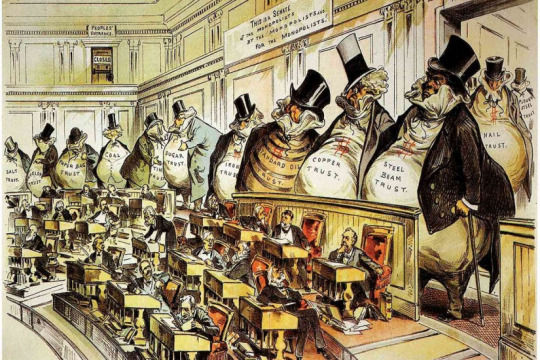
Presidents:
Ulysses S. Grant (1869-1877)
Rutherford B. Hayes (1877-1881)
Important Events:
-The Gilded Age begins. Characterized by gross materialism and blatant political corruption that gave rise to important novels of social and political criticism.
-1870 - Standard Oil Company is incorporated by John D. Rockefeller.
-1870 - The first African-American to be sworn into office in the United States Congress, Hiram Rhodes Revels, a Republican from Mississippi takes his place in the United States Senate.
- 1870 - The 15th Amendment is ratified. It gave the right to vote to Black Americans. Race would officially no longer be a ban to voting rights, though it continues to be an issue in Southern states.
- 1871 - The great fire of Chicago starts. The fire burned 1.2 million acres of land, destroyed 17,450 buildings, killed 250 people, and left 90,000 homeless.
- 1876 - The Battle of Little Big Horn occurs when Lt. Colonel George Custer and his 7th U.S. Cavalry engage the Oceti Sakowin and Cheyenne Indians on the bluffs above the Little Big Horn River. All 264 members of the 7th Cavalry and Custer perish in the battle, the most complete rout in American military history.
- 1877 - Crazy Horse surrenders to the United States Army in Nebraska. His people had been weakened by cold and hunger.
- 1878 - The first commercial telephone exchange is opened.
- 1878 - Thomas Edison patents the cylinder phonograph and the Edison Electric Company begins operation
4. The 1880s

Presidents:
James A. Garfield (1881-1881)
Chester A. Arthur (1881-1885)
Grover Cleveland (1885-1889)
Benjamin Harrison (1889-1893)
Important Events:
- 1881 - Thomas Edison and Alexander Graham Bell form the Oriental Telephone Company.
-1882 - The Standard Oil Company trust of John D. Rockefeller is formed when Rockefeller places all of his oil holdings inside it.
- 1883 - The Pendleton Civil Service Reform Act is passed by Congress, overhauling federal civil service and establishing the U.S. Civil Service agency.
- 1884 - The Federation of Organized Trades and Labor Unions in the U.S.A. call for an eight-hour workday.
- 1885 - The Statue of Liberty arrives for the first time in New York harbor.
- 1886 - The Haymarket riot and bombing occurs in Chicago three days after the start of a general strike in the United States that pushed for an eight-hour workday.
- 1887 - Congress passes the Interstate Commerce Act to regulate and control the monopolies of the railroad industry.
- 1888 - The prototype for the commercial phonograph is completed by Thomas A. Edison
- 1888 - The Washington Monument officially opens to the general public.
5. The 1890s
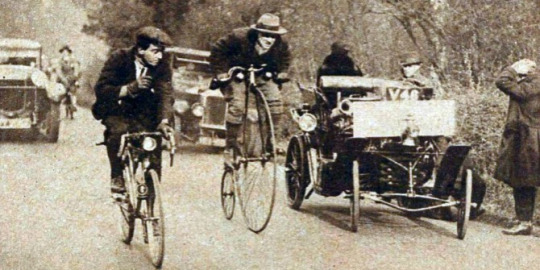
Presidents:
Benjamin Harrison (1889-1893)
Grover Cleveland (1893-1897)
William McKinley (1897-1901)
Important Events:
- The rise of Imperialism.
- 1890 - The Battle of Wounded Knee, South Dakota, occurs in the last major battle between United States troops and Native Americans. Hundreds of native men, women, and children are slain.
- 1892 - Ellis Island, in New York Harbor, opens as the main east coast immigration center, and would remain the initial debarkation point for European immigrants into the United States until its closure in 1954. More than 12 million immigrants would be processed on the island during those years.
- 1892- Nativist sentiments rise with the immigration of Southern and Eastern Europeans flooding into the country. Italian, Polish, Russian, and other immigrants face significant discrimination.
- 1895 - The first professional football game is played in Latrobe, Pennsylvania.
- 1896 - Plessy vs Ferguson decision by the Supreme Court states that racial segregation is approved under the "separate but equal" doctrine. This paves the way for Jim Crow laws in the South.
- 1896 - The first modern Olympic Games is held in Athens, Greece.
- 1896 - Gold is discovered near Dawson, Canada, setting up the Klondike Gold Rush
- 1897 - The era of the subway begins when the first underground public transportation in North America opens in Boston, Massachusetts.
-1897- The Progressive Era begins
- 1898 – The Spanish- American War begins. It lasts one year and ends in U.S. victory. It was triggered by United States battleship Maine exploding and sinking under unknown causes in Havana Harbor, Cuba, killing two hundred and sixteen seamen.
- 1898 - The United States annexes the independent republic of Hawaii.
- 1899 - The Open Door Policy with China is declared by Secretary of State John Hay
9. The 1900s

Presidents:
William McKinley (1897-1901)
Theodore Roosevelt (1901-1909)
William Howard Taft (1909-1913)
Important Events:
- 1901 - The American League of Major League Baseball is formed.
- 1902 - The first movie theatre in the United States opens in Los Angeles, California.
- 1902 - Cuba gains independence from the United States.
- 1903 - Inventors Wilbur and Orville Wright succeed in the first sustained and manned plane flight.
- 1906 - The Pure Food and Drug Act and the Meat Inspection Act is passed due to the efforts of “muckrakers” that worked to expose corruption. “The Jungle” by Upton Sinclair, which described the horrible conditions in the meatpacking industry, helped sponsor outrage that would get these laws passed.
- 1908 - The first passenger flight on a plane occurs when Wilbur Wright escorts Charles W. Furnas in the Wright Flyer III at Huffman Prairie Flying Field in Dayton, Ohio.
- 1908- The first production Model T is built at the Ford plant in Detroit, Michigan.
10. The 1910s

Presidents:
William Howard Taft (1909-1913)
Woodrow Wilson (1913-1921)
Important Events:
- 1911 - Standard Oil is declared a monopoly by the United States Supreme Court and ordered dissolved under the powers of the Sherman Antitrust Act.
- 1913 - The first moving assembly line is introduced and adopted for mass production by the Ford Motor Company, allowing automobile construction time to decrease by almost 10 hours per vehicle.
- 1915 – The first telephone conversation is conducted by Alexander Graham Bell and Thomas A. Watson between New York and San Francisco.
- 1915 - The British ship Lusitania is sunk by a German U-boat submarine, causing 128 American passengers to be lost. Germany, although it warned of the pending crises to passengers, issued an apology to the United States and promised payments.
- 1918 - The influenza epidemic Spanish flu spans the globe, killing over twenty million worldwide and five hundred and forty-eight thousand people in the United States.
- World War I 1917-1918
Overview: After three years spent remaining neutral, the United States joins World War I. The U.S. made its major contributions in terms of supplies, raw material, and money, and its joining into the war helped to turn the tides against the Germans and Ottomans.
People to know:
Woodrow Wilson (President)
John J. Pershing (General)
Important Events/Battles
The United States declares war on Germany in 1917 after the Zimmermann Telegram is given to the United States by Britain on February 24, showing the offer by Germany to give Mexico back the southwest United States if they would declare war on the United States.
June 26th, 1917 - The first troops from the United States arrive in Europe to assist European allies in World War I. Troops engaged in World War I would include conscript soldiers authorized by the passage of the Conscription Act, the Selective Services Act, on May 18, 1917. General John Pershing would be placed in command of the American Expeditionary Forces during the campaign.
1918 - The United States military forces has over one million troops in Europe fighting in World War I.
May 28, 1918- United States forces are victorious in the Battle of Cantigny, the first independent American operation.
September 26, 1918- Allied forces begin the attack at Meusse-Argonne, the final offensive of the war.
November 11, 1918 - Hostilities in World War I begin to end with the Austria-Hungary alliance for armistice with the allies on November 3. Armistice Day with Germany occurs when the Allies and the German nation sign an agreement in Compiegne, France. Woodrow Wilson would become the first U.S. President to travel to Europe while in office when he sails to attend the Paris Peace Conference on December 4.
1919 - The Treaty of Versailles is signed, ending World War I.
- 1919- The 18th Amendment is passed, bringing about the era of Prohibition
11. The 1920s

Presidents:
Woodrow Wilson (1913-1921)
Warren G. Harding (1921-1923)
Calvin Coolidge (1923-1929)
Herbert Hoover (1929-1933)
Important events:
-1920 - The League of Nations is established with the ratification of the Treaty of Versailles, ending the hostilities of the first World War. In a final vote, the United States Senate again votes against joining the League.
- 1920 - Women are given the right to vote when the 19th Amendment to the United States constitution grants universal women's suffrage.
- 1920 - The National Football League is formed
- 1921 - A national quota system on the number of incoming immigrants is established by the United States Congress in the Emergency Quota Act, curbing legal immigration.
- 1923 - The first sound on film motion picture Phonofilm is shown in the Rivoli Theatre in New York City by Lee de Forest.
- 1924 - The Indian Citizenship Act granted all Native Americans citizenship that had been born within the territory of the United States.
- 1925 - Nellie Tayloe Ross is inaugurated as the first woman governor of the United States in Wyoming.
- 1925 - Radiovision is born. The precursor to television is demonstrated by Charles Francis Jenkins when he transmits a 10 minute film of synchronized pictures and sound for five miles from Anacostia to Washington, D.C. to representatives of the United States government.
- 1928 - The first appearance of Mickey and Minnie Mouse on film occurs with the release of the animated short film, Plane Crazy.
- 1928 - Amelia Earhart becomes the first woman to fly over the Atlantic Ocean.
- 1929 - Postwar prosperity ends in the 1929 Stock Market crash. The plummeting stock prices led to losses between 1929 and 1931 of an estimated $50 billion and started the worst American depression in the nation's history.
Hope this helped, and happy writing!!!!!
#writing#writing tips#writing advice#writeblr#booklr#writing help#writer#writers#history#historical fiction#fiction#creative writing#tips for writers
93 notes
·
View notes
Text
Navigating the Patent Landscape: A Strategic Advantage for Businesses
In today’s competitive market, understanding the patent landscape is crucial for businesses aiming to
innovate and protect their intellectual property. Both California and North Carolina have emerged as
key hubs offering comprehensive patent landscape services, catering to a diverse range of industries.
This article delves into the importance of these services, focusing on the offerings in California and
North Carolina.
Patent Landscape Services in California
California, renowned for its vibrant tech ecosystem, is home to numerous patent landscape service
providers. These services are instrumental for companies looking to navigate the complex world of
patents. By analyzing patent data, businesses can identify emerging trends, avoid potential
infringements, and uncover opportunities for innovation. Providers in California leverage advanced
analytics and AI to sift through vast patent databases, offering insights that drive strategic decision
making. Companies such as TechInsights and PatentSight are prominent in this space, helping clients
understand the competitive patent landscape and make informed R&D investments.
Patent Landscape Analysis in North Carolina
North Carolina, with its growing tech and biotech sectors, is also a significant player in patent
landscape analysis in north california. The state offers a robust ecosystem for patent landscape
analysis services, catering to both startups and established enterprises. Firms in North Carolina
provide detailed analyses that help businesses understand patent trends, technological
advancements, and competitor activities. This information is crucial for companies aiming to secure
their market position and guide their innovation strategies.
Comprehensive Analysis Services in North Carolina
Patent landscape analysis services in North Carolina are designed to offer a thorough understanding
of the patent environment. Providers such as IP.com and Red Hat offer extensive databases and
analytical tools to help businesses navigate the patent terrain. These services include mapping
existing patents, identifying gaps in the market, and spotting potential areas for patent infringement.
By providing a clear picture of the competitive landscape, these analyses enable companies to make
data-driven decisions and minimize risks associated with patent litigation.
Competitive Landscape Patent Analysis in north california
Understanding the competitive landscape in north california is essential for maintaining a
competitive edge. In North Carolina, competitive landscape patent services provide critical insights
into what competitors are patenting, allowing businesses to adjust their strategies accordingly. These
services help identify technological white spaces where innovation can thrive without infringing on
existing patents. This proactive approach is essential for companies looking to innovate strategically
while avoiding costly legal battles.
Why These Services Matter
Patent landscape services in north california and North Carolina are invaluable for businesses looking
to innovate while protecting their intellectual property. By leveraging detailed patent analyses,
companies can navigate the complexities of the patent world, identify new opportunities, and
mitigate risks. Whether it’s understanding competitor activities or spotting new market trends, these
services provide the intelligence needed to make informed strategic decisions.In conclusion, both California and North Carolina offer robust patent landscape services that cater to
the diverse needs of modern businesses. These services not only help in protecting intellectual
property but also in driving innovation and maintaining a competitive edge in the market.
0 notes